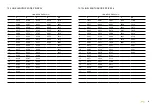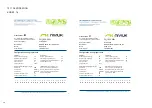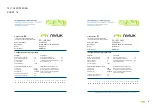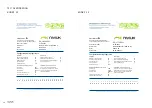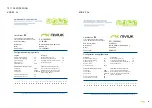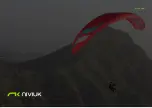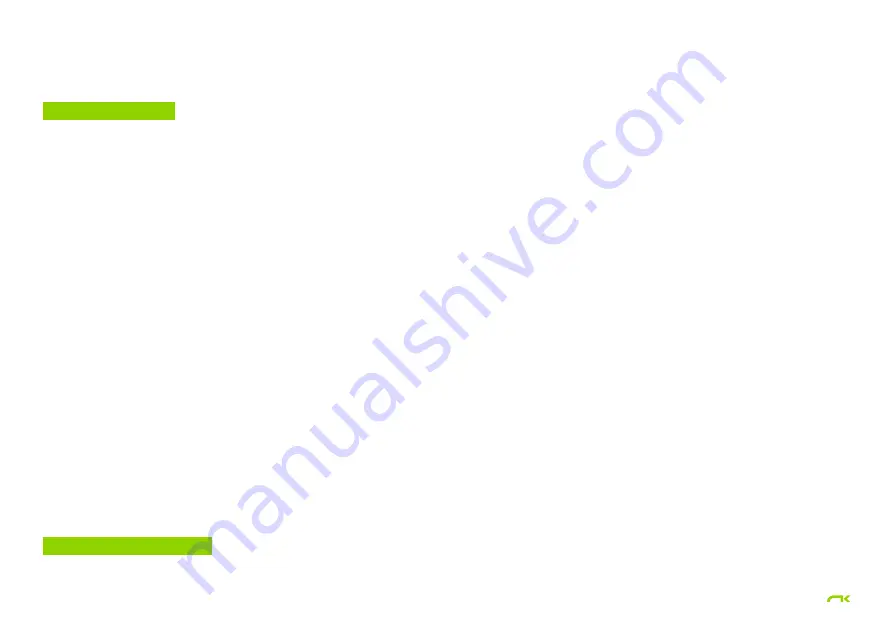
15
Common sense has to be used to avoid dangerous areas of rotor when
looking for descending air. Safety first!
6. SPECIAL METHODS
6.1 TOWING
The KODE P does not experience any problem whilst being towed. Only
qualified winch personnel should handle the certified equipment to carry
out this operation. The wing must be inflated in the same way as during a
normal hill take off.
It is important to use the brakes to correct the flight path alignment,
especially at the beginning of the tow. Since the wing is subject to a slow
airspeed and with a high positive angle of attack, any course corrections
must be made with a high degree of feel and delicacy, in order to avoid a
stall.
6.2 ACROBATIC FLIGHT
Although the KODE P was tested by expert acrobatic pilots in extreme
situations, it was NOT designed for this type of flying. We do NOT
recommend using this glider for aerobatics.
We consider extreme or acrobatic flights to be any form of piloting
different than standard flights. Learning aerobatic/acrobatic manoeuvres
should be conducted under the supervision of qualified instructors within
a school environment and over water with all safety/rescue elements in
place. When performing extreme manoeuvres, you will subject both the
glider and your body to centrifugal forces that can reach up to 4 or 5 g,
wearing out the material much faster than with normal flight.
7. CARE AND MAINTENANCE
7.1 MAINTENANCE
Careful maintenance of your equipment will ensure continued top
performance. Independently of annual inspections, we advise active care
of the equipment.
A pre-flight check is obligatory before each flight.
If you have any unforeseen incidents which may affect the areas where
the equipment is most susceptible to damage, you should check and act
accordingly.
At Niviuk we are firmly committed to make technology accessible to all
pilots. For this reason all our wings are fitted with the latest innovations.
Thanks to our innovative technologies, the wing has more safety and
performance, but this means being more careful with the material.
A hard impact or dragging the leading edge against a hard surface can
damage the sail cloth. All incidents involving the leading edge should be
reviewed.
If a Nitinol rod is damaged, they are easily replaceable.
The fabric and the lines do not need to be washed. If they become
dirty, clean them with a soft damp cloth, using only water. Do not use
detergents or other chemicals.
If your wing is wet from contact with water, place it in a dry area, air it and
keep it away from direct sunlight.
Direct sunlight may damage the wing’s materials and cause premature
deterioration. Before launch or after landing, do not leave the wing
exposed to the sun. Pack it and stow it away in its backpack.
If flying in a sandy environment, and sand has accumulated inside the
wing, remove it before packing it away. The apertures at the wingtips
Содержание KODE P
Страница 1: ...KODE P User s manual...
Страница 18: ...ANNEXES 10 1 TECHNICAL DATA 10 2 MATERIALS DESCRIPTION 10 3 RISER PLAN 10 4 LINE PLAN 18...
Страница 21: ...21 10 3 RISER PLAN 16 18 20 22 24 26...
Страница 22: ...22 10 4 LINE PLAN...
Страница 30: ...niviuk com...

























